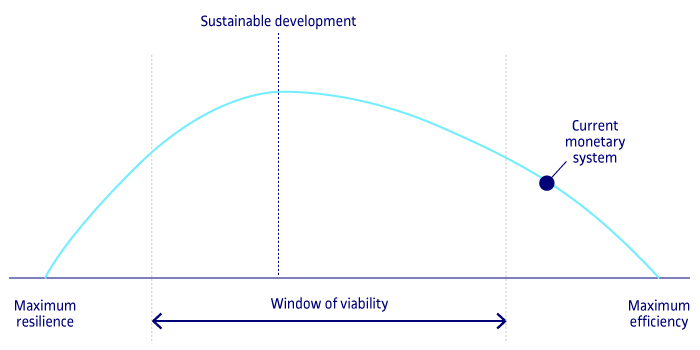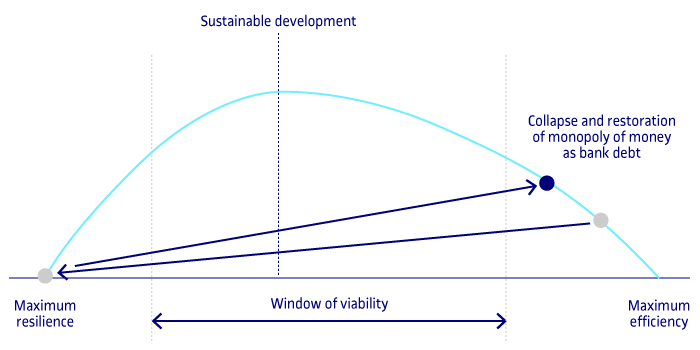1.3. Need for a paradigm shift
1.3.2. The unsustainability of the current monetary system
The study of the balance between efficiency and resilience with respect to the sustainability of complex systems, despite being an analysis of natural ecosystems, is based on the pure structure of this type of system. It is therefore valid for any complex network with a similar structure, irrespective of what is being processed: biomass in an ecosystem; information in a biological system; or, indeed, money in an economic system.
The current monetary system is excessively efficient (Figure 6), in the sense that it is capable of managing extremely high volumes of information, merchandise, etc. Currency equivalent to some four trillion dollars is traded every day, against a GWP (Gross World Product) of 78 trillion dollars. However, under the conceptual framework of an economy which is part of an ecosystem of finite resources, and subject to diminishing returns, an excess of efficiency can be prejudicial. All of this would partly explain the recurring crises, given that we are situated at a point of great efficiency, yet beyond the threshold of sustainability.

The current monetary system’s method of operation, with its exclusive emphasis on efficiency, means that it is moving further and further away from the optimal point (Figure 7). There is a prevailing general belief that all improvement has to move in the same direction, which steers the system even further from the optimal sustainability point.

Under this method of operation, when the monetary system collapses (Figure 8), its efficiency is drastically reduced for a short time, thereby moving it into the area of maximum resilience. But this is only a temporary situation, which is quickly acted upon by global policies and conventions designed to steer the system back toward a point very close to where it was prior to the crisis, that is, one of excessive efficiency. The adjustments made post-crisis are produced by increasing efficiency rather than resilience, returning the system to a point of instability, because the crises are not treated as systemic, and all efforts are focused on dealing with the symptoms rather than the structural failings that produce them.
